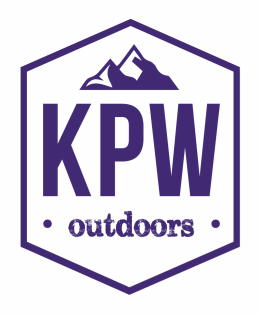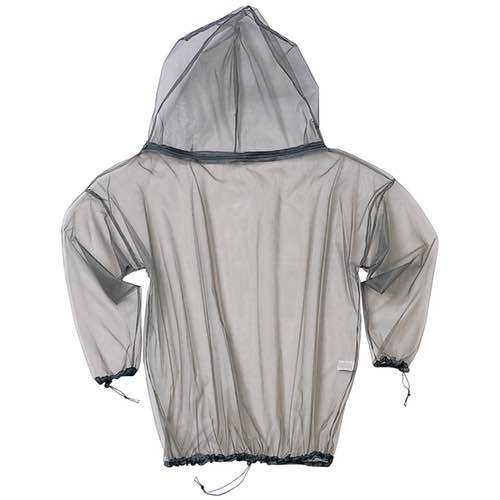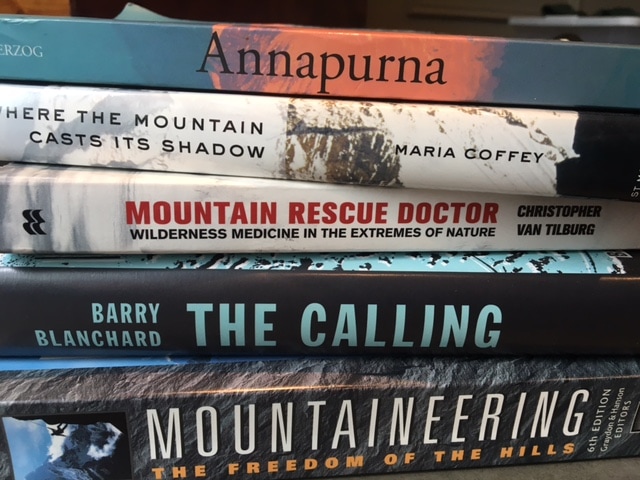Bug season. I can hear the groans now. From mid-May to early July, many Ontarians hide away in their homes and cottages waiting for bug season to end. Mosquitos and Black Flies prey in hordes on any exposed flesh. For years way back in the 90's I returned home from camping with blood stained clothes, wet DEET covered skin, and looking like I had acquired the measles. DEET, Muskol and other repellents do work, but sometimes not good enough.
I have spent the last 15 years working as an Outdoor Education teacher and have spent the second week of June deep into the wildest swamps and portages in Algonquin Park (along with dozens of teenagers). By the way, high school groups are the only people in the park at that time of year. Why? It is the epi-centre of bug habitat (BONUS: It's also a great time to see moose, as they survive by standing in pools of water). I once counted 600 mosquitoes on the outside of my tent on one trip. And I haven't use bug spray in over 10 years! How do I do it? Read on to find out:
Here are my tips for making bug season more bearable:
1. Buy a bug jacket
Bug jackets have revolutionized surviving bug season for me. I bought a jacket 10 years ago and it's still going strong (pick one up for $13.75 from MEC). Avoid buying the screen/cotton combination jackets (too hot!) and ones that have a black or dark coloured screen over the face (grey is the best). Buy a jacket if you can that is one size larger then you would normally wear as the baggy screen fabric is a key to keeping the bugs off your skin especially when wearing a t-shirt). Larger sizes make wearing it an outer layer over a fleece or hoody easier as well, and you can retract your hands in the sleeves when you have more room. These jackets are worth their weight in gold. I make them mandatory equipment on all my trips.
2. Wear long pants
Long pants are essential during bug season. It might be 25C degrees out, but if you are in the backcountry they are a massive barrier to keeping your skin away from the bugs. Choose pants that are light enough to stay cool in, but thick enough to deter bites. Avoid pants with holes in them, or for ladies, avoid leggings as bugs can eat right through them.
3. Wear long socks
Ankle socks are a favourite of most people, especially during summer weather. My rule during bug season is to wear longer socks. When camping, I will wear synthetic or merino wool hiking socks and tuck my pant ends into them so that bugs can't travel up the leg of my pants and feast on my legs. It looks ridiculous, but it works!
4. Wear a baseball type hat
Wearing a brimmed hat makes sense for many reasons, but in bug season it's also advantageous. I wear a baseball hat with a solid brim under my bug jacket. This keeps the bug jacket hood and face cover off my face, and allows me to breathe without sucking in the screen fabric. Also, avoid trucker hats in bug season, as bugs will be able to bite through the mesh fabric at the back of the hat. For women with longer hair, tie hair in a ponytail and keep the bug jacket hood off your neck.
5. Wear running shoes
As soon as the snow melts, some people immediately switch to wearing flip flops, Crocs, Birkenstocks and Keen sandals. All of these should never be worn during bug season. I normally wear old running shoes in the backcountry when paddling or camping, and hiking boots when backpacking. Camping in August? Bring the sandals then.
6. Wear gloves
Hands are the hardest part to cover during bug season. Consider bringing a thin liner glove to use when cooking or doing other tasks. When portaging a canoe, I retract my hands into the sleeves of my larger size bug jacket and watch the bugs land on the fabric, not my flesh.
By taking these tips into consideration, bug season becomes completely manageable. I never think of bug season as hardship anymore and have no problems spending time in the epi-centre of bug breeding habitat. So get outside and enjoy our natural wonders...bugs and all!
Happy Camping!
I have spent the last 15 years working as an Outdoor Education teacher and have spent the second week of June deep into the wildest swamps and portages in Algonquin Park (along with dozens of teenagers). By the way, high school groups are the only people in the park at that time of year. Why? It is the epi-centre of bug habitat (BONUS: It's also a great time to see moose, as they survive by standing in pools of water). I once counted 600 mosquitoes on the outside of my tent on one trip. And I haven't use bug spray in over 10 years! How do I do it? Read on to find out:
Here are my tips for making bug season more bearable:
1. Buy a bug jacket
Bug jackets have revolutionized surviving bug season for me. I bought a jacket 10 years ago and it's still going strong (pick one up for $13.75 from MEC). Avoid buying the screen/cotton combination jackets (too hot!) and ones that have a black or dark coloured screen over the face (grey is the best). Buy a jacket if you can that is one size larger then you would normally wear as the baggy screen fabric is a key to keeping the bugs off your skin especially when wearing a t-shirt). Larger sizes make wearing it an outer layer over a fleece or hoody easier as well, and you can retract your hands in the sleeves when you have more room. These jackets are worth their weight in gold. I make them mandatory equipment on all my trips.
2. Wear long pants
Long pants are essential during bug season. It might be 25C degrees out, but if you are in the backcountry they are a massive barrier to keeping your skin away from the bugs. Choose pants that are light enough to stay cool in, but thick enough to deter bites. Avoid pants with holes in them, or for ladies, avoid leggings as bugs can eat right through them.
3. Wear long socks
Ankle socks are a favourite of most people, especially during summer weather. My rule during bug season is to wear longer socks. When camping, I will wear synthetic or merino wool hiking socks and tuck my pant ends into them so that bugs can't travel up the leg of my pants and feast on my legs. It looks ridiculous, but it works!
4. Wear a baseball type hat
Wearing a brimmed hat makes sense for many reasons, but in bug season it's also advantageous. I wear a baseball hat with a solid brim under my bug jacket. This keeps the bug jacket hood and face cover off my face, and allows me to breathe without sucking in the screen fabric. Also, avoid trucker hats in bug season, as bugs will be able to bite through the mesh fabric at the back of the hat. For women with longer hair, tie hair in a ponytail and keep the bug jacket hood off your neck.
5. Wear running shoes
As soon as the snow melts, some people immediately switch to wearing flip flops, Crocs, Birkenstocks and Keen sandals. All of these should never be worn during bug season. I normally wear old running shoes in the backcountry when paddling or camping, and hiking boots when backpacking. Camping in August? Bring the sandals then.
6. Wear gloves
Hands are the hardest part to cover during bug season. Consider bringing a thin liner glove to use when cooking or doing other tasks. When portaging a canoe, I retract my hands into the sleeves of my larger size bug jacket and watch the bugs land on the fabric, not my flesh.
By taking these tips into consideration, bug season becomes completely manageable. I never think of bug season as hardship anymore and have no problems spending time in the epi-centre of bug breeding habitat. So get outside and enjoy our natural wonders...bugs and all!
Happy Camping!



 RSS Feed
RSS Feed


